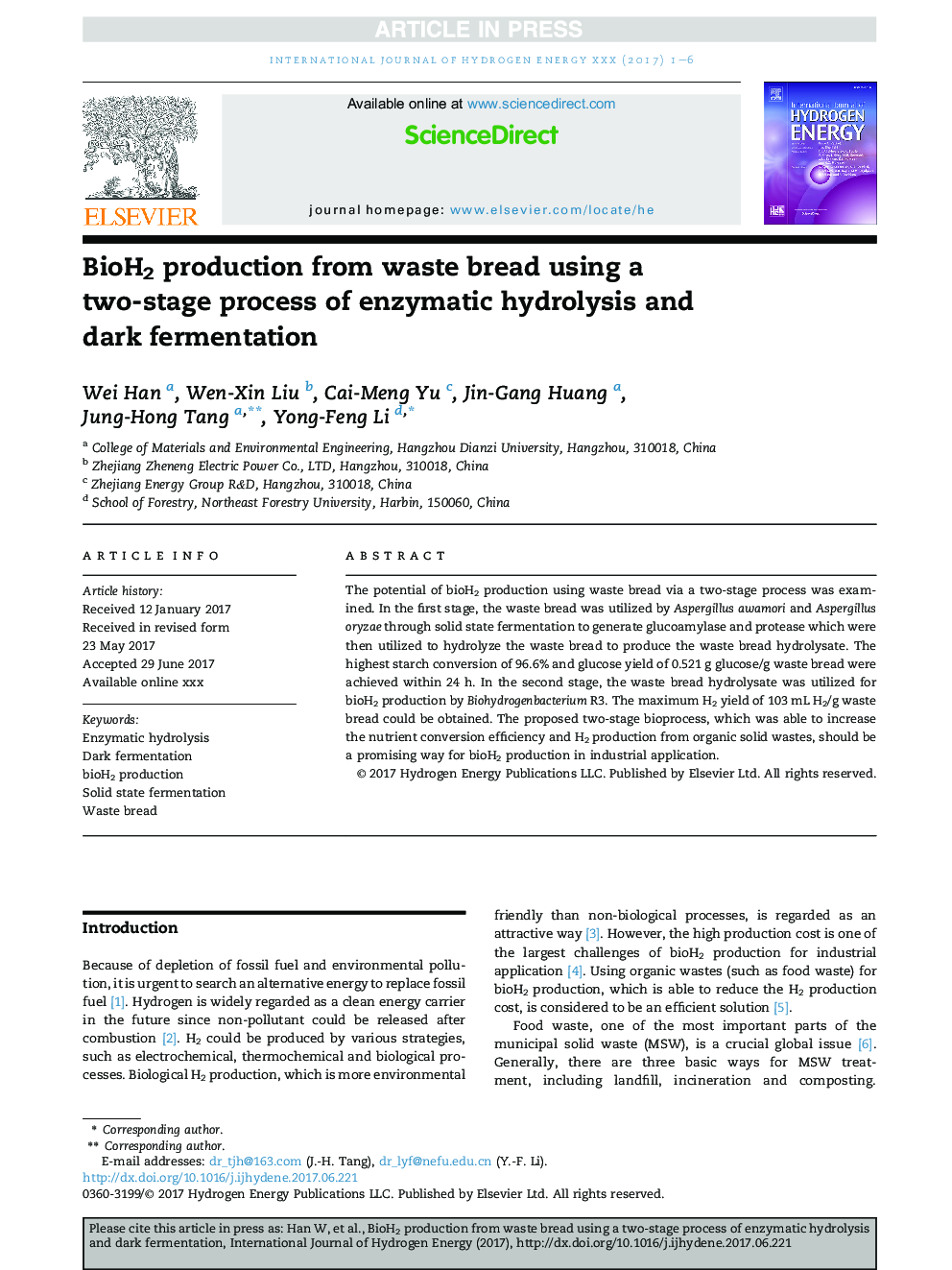| Article ID | Journal | Published Year | Pages | File Type |
|---|---|---|---|---|
| 7709182 | International Journal of Hydrogen Energy | 2017 | 6 Pages |
Abstract
The potential of bioH2 production using waste bread via a two-stage process was examined. In the first stage, the waste bread was utilized by Aspergillus awamori and Aspergillus oryzae through solid state fermentation to generate glucoamylase and protease which were then utilized to hydrolyze the waste bread to produce the waste bread hydrolysate. The highest starch conversion of 96.6% and glucose yield of 0.521Â g glucose/g waste bread were achieved within 24Â h. In the second stage, the waste bread hydrolysate was utilized for bioH2 production by Biohydrogenbacterium R3. The maximum H2 yield of 103Â mL H2/g waste bread could be obtained. The proposed two-stage bioprocess, which was able to increase the nutrient conversion efficiency and H2 production from organic solid wastes, should be a promising way for bioH2 production in industrial application.
Related Topics
Physical Sciences and Engineering
Chemistry
Electrochemistry
Authors
Wei Han, Wen-Xin Liu, Cai-Meng Yu, Jin-Gang Huang, Jung-Hong Tang, Yong-Feng Li,
